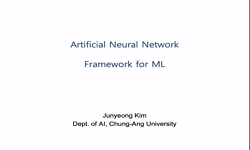Reinforcement corrosion affects the existing concrete structures, particularly in the coastal regions. One of the effects of corrosion of reinforcement is degradation of the bond stress that can be developed between the reinforcement and the surroundi...
http://chineseinput.net/에서 pinyin(병음)방식으로 중국어를 변환할 수 있습니다.
변환된 중국어를 복사하여 사용하시면 됩니다.
- 中文 을 입력하시려면 zhongwen을 입력하시고 space를누르시면됩니다.
- 北京 을 입력하시려면 beijing을 입력하시고 space를 누르시면 됩니다.
https://www.riss.kr/link?id=A107907826
- 저자
- 발행기관
- 학술지명
- 권호사항
-
발행연도
2021
-
작성언어
English
- 주제어
-
등재정보
SCOPUS,ESCI
-
자료형태
학술저널
-
수록면
235-255(21쪽)
- 제공처
-
0
상세조회 -
0
다운로드
부가정보
다국어 초록 (Multilingual Abstract)
Reinforcement corrosion affects the existing concrete structures, particularly in the coastal regions. One of the effects of corrosion of reinforcement is degradation of the bond stress that can be developed between the reinforcement and the surrounding concrete and this in turn affects the capacity of the reinforced concrete member. Prediction of the bond stress applicable for the corroded reinforcement has been attempted using analytical, empirical and soft computing methods. This article presents the comparative performance of two data-driven tools, artificial neural network (ANN) and decision tree (DT) for the task of prediction of bond stress from the corrosion level, the compressive strength of concrete and the ratio of cover and diameter of reinforcement bar. From the extensive evaluation of performance with both quantitative and graphical methods, it was concluded that the ANN approach would be better suited for the application, with the available data. For development of the models 8-fold cross validation scheme was adopted due to the limitations of data. The ANN models trained with pull-out test data, when employed with ensemble approach in predictive mode for a different experiment setup and bond strength test (flexural) data, could produce results comparable to ANN models trained with flexural test data (reported in literature). The inclusion of the additional factors (compressive strength of concrete and the ratio of cover and diameter of reinforcement bar), 8-fold cross validation approach, and ensemble prediction could be the possible reasons for achieving such portability of pull-out test based model for prediction of flexural test data.
동일학술지(권/호) 다른 논문
-
Field implementation of low-cost RFID-based crack monitoring using machine learning
- Techno-Press
- Fils, Pierredens
- 2021
- SCOPUS,ESCI
-
- Techno-Press
- Mortezaie, Hamid
- 2021
- SCOPUS,ESCI
-
The seismic responses of girder bridges with novel sliding lead rubber bearings
- Techno-Press
- Wu, Yi-feng
- 2021
- SCOPUS,ESCI
-
Monitoring the required energy for the crack propagation of fiber-reinforced cementitious composite
- Techno-Press
- Mirzamohammadi, Sajjad
- 2021
- SCOPUS,ESCI





 ScienceON
ScienceON






